Cedar is a resinous tree whose wood has a specific odour that keeps insects away, even moths and cavities. That's why it's used for making cabinets or packing boxes and crates. Cedarwood's distinctive scent has also inspired perfume makers. If you are looking for information in French about cedar wood - cedar wood - the first information will be about Karl Lagerfeld's fragrance of the same name. Cedarwood's resistance to moisture is very good, its properties becoming even better when the wood is submerged in water. In ancient times, the use of cedar for making ships made the Phoenicians great traders and sailors. The essential oil extracted from one species of cedar is used in aromatherapy and herbal medicine because of its antiseptic and anti-inflammatory properties. All these properties are an invitation to learn more about this special wood.
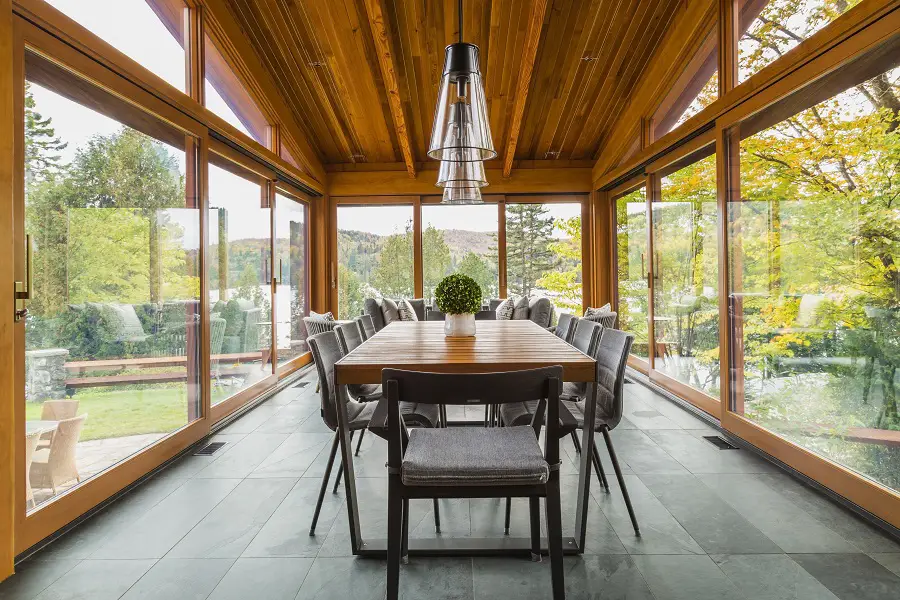
The wood from which Solomon's temple was built
Cedar (Cedrus) is a conifer belonging to the family Pinaceae. It is native to the mountainous region of the Mediterranean area as far as beyond the Himalayas. The best known species are the Lebanese cedar (Cedrus libani), with mountainous areas in the Mediterranean basin, the Atlas cedar (Cedrus atlantica) - mountainous area of Morocco and Algeria - Cyprus cedar (Cedrus brevifolia), native to Cyprus, and Himalayan cedar (Cedrus deodara), native to the accidental Himalayas. In English it is cedar, in Italian cedar, in French cedar.
Botanically, many consider the Lebanese cedar the true cedar. It is the best known and most widespread of the cedars. It has been acclimatised in many parts of western Europe, but also in New Zealand, North America and Australia, and in Europe it is even cultivated for its precious wood. The Lebanese cedar is the national tree of Lebanon and is also featured on the flag. It was known and used in the ancient world thousands of years ago and is also mentioned in the Bible as the wood used to build Solomon's temple. Some experts even consider Atlas and Cyprus cedar to be subspecies of the Lebanese cedar.
Because of the smell of wood, there is an inflation of species called cedareven if they are not because they do not belong to the genus Cedrus. Chiparosul (Cupressus Sempervirens) is most often thought of as cedar, as is Siberian pine, where the confusion comes from the Russian name. Spanish cedar, native to West Africa and South America, which is not even a conifer but a species of mahogany, is not cedar, nor is Red Cedar, from North America, which is a species of thuja.
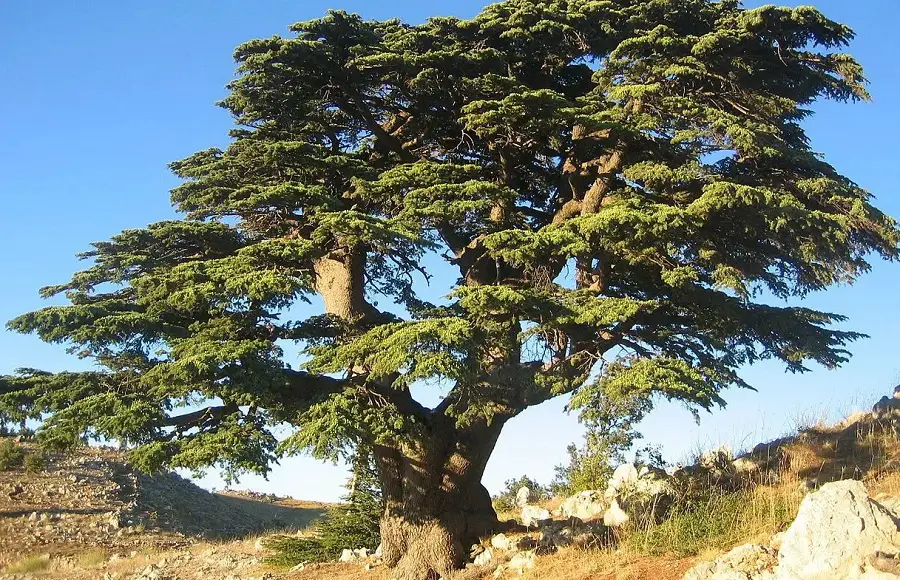
Cedar can reach 60 m in height and over 2 m in diameter
The Lebanese cedar, because it is the most commonly used, is an imposing tree that often reaches 40 m in height and over 2 m in diameter. There are specimens that reach 60 m in height. The trunk is massive and strong and the branches are broad and horizontal. The bark is blackish brown with cracks. It has a distinct shape with well-defined horizontal layers.
The leaves are in the form of long needles, gathered in bunches and arranged helically around the side shoots. They are grey-green with transparent tips and do not fall in autumn, the cedar being an evergreen evergreen. It has both female and male reproductive organs on the same tree. The male cones are small and grey-green at first, then lengthen to brown. They release pollen that fertilises the female cones, which are small and green at first and then after pollination turn brown and look very much like little barrels. When they ripen they open and release seeds that are triangular and contain a nasty resin that keeps squirrels away.
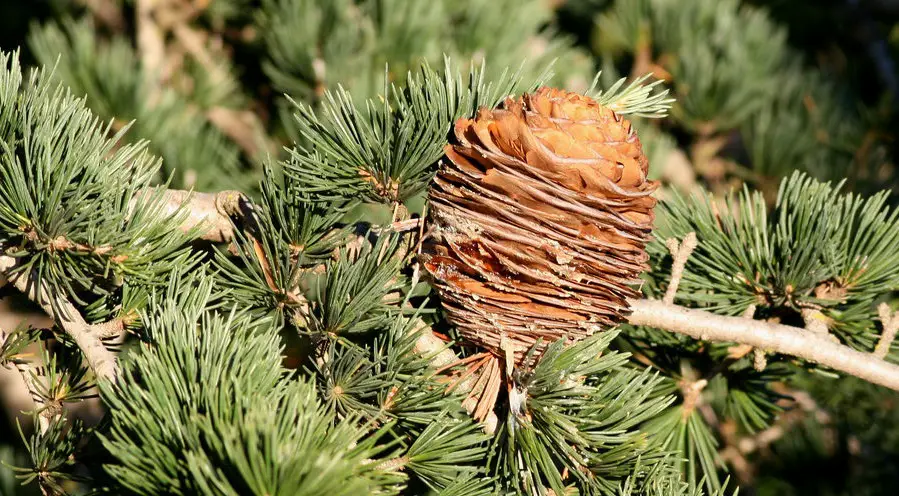
Cedar wood - properties and characteristics
In cross-section through the trunk the difference between the sapwood, light yellow to white, and the heartwood, reddish brown, is evident. The annual rings are distinct, with the transition from early wood gradually moving from faster and steeper growing wood to slower growing wood. Nodes may be more or fewer, smaller or larger, depending on the growing area.
The fibre is generally straight, except in the knotted area where it becomes irregular. The texture is medium to coarse with low to medium natural gloss. It has no resinous grooves, except for those resulting from injuries. The diameter of the tracheid is small.
The average density of anhydrous cedar is 520 kg/m³. It is considered a very durable wood, being resistant to moisture and insect attack. It works well, both manually and mechanically, turning easily, gluing and finishing smoothly. It has a lingering, slightly sweet fragrance. It dries easily and has a low tendency to crack and warp compared to other species. It has good thermal and insulating properties, vibration damping properties and a low flame propagation rate.
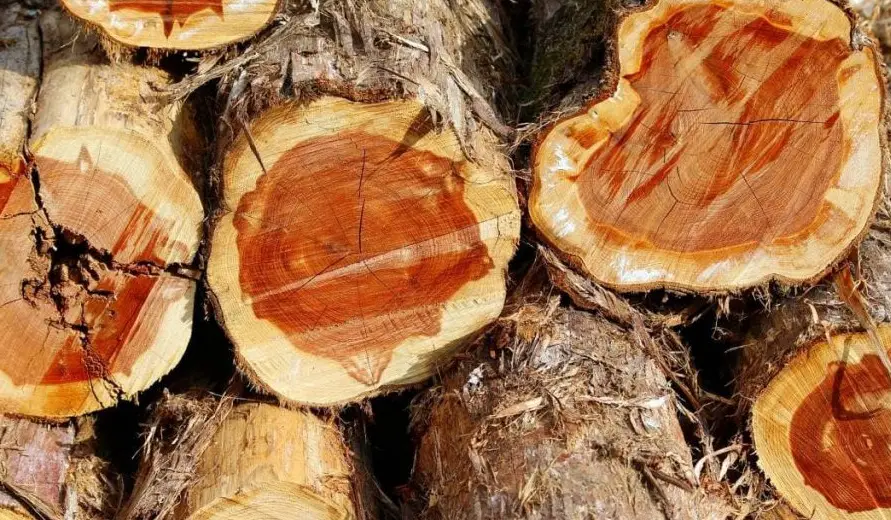
Uses of cedar wood
Because it is highly resistant to water and insects and lighter than equally hardy hardwood species (oak, acacia) is preferred for outdoor projects. It is used for cladding houses or for making shingle. Since ancient times it was used to build temples or palaces because it was very resistant over time.
The specific smell, very pleasant for people, but a weapon against moths and moths, makes it very suitable for making cupboards and drawers where clothes and linen are kept. In the past, craftsmen used to specifically look for cedar wood to make their wardrobes, being sure that moths would not get inside. When it wasn't possible to make the whole wardrobe out of cedar, they used wood or veneer to line the inside. Also because of its pleasant smell, it is used to make shoe cupboards, shoe grooves (eliminates the unpleasant smell of sweaty shoes), boxes and crates. It is the main wood species used to make cigar boxes and humidors.
Cedar is a pleasant-looking wood, which is why it is used for furniture, floors, stairs and ceilings. It is used to make boats, decks and musical instruments. It is also used as veneer.
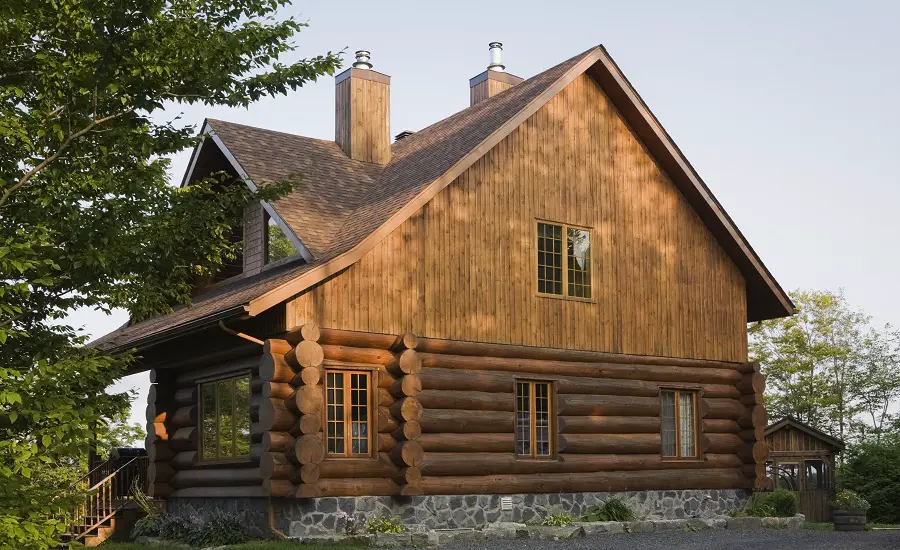
Cooking fish on cedar plank
An interesting use for cedar wood is for cooking fish, especially salmon and seafood, as well as vegetables. These will acquire a specific smoky flavour, much appreciated by connoisseurs. For cooking, use a wooden board as a chopping board that is moistened for 2-3 hours before being put on the grill.
A grill with a lid is needed. Light the coals and when they turn to charcoal, place the cedar plank on which the fish or whatever you want to cook has been placed directly on them. Leave it until the wood begins to smoke, then move the board to the indirect heat area and cover with the lid. There should be at least 10 cm between the salmon plate and the pot. The fish cooks quite quickly so there is no need to wait for hours as with smoke cooked meat. At the end the fish will have a distinctive, slightly sweet and smoky taste. The plate can be reused several times if thoroughly cleaned with a wire brush and warm water after each use. Gas or electric grills can also be used, the important thing is to have a lid.
Used since ancient times in herbal medicine
Cedarwood is cold-distilled to extract an essential oil with an odour similar to pine turpentine and rich in valuable ingredients such as vitamins A, B, D, E and F, potassium, iron and magnesium. The oil has been known since ancient times when it was used to make potions for wounds or cough drops. Ancient Egyptians used it to embalm the dead.
Now cedar oil is used in the manufacture of herbal medicines. It is used as a remedy for colds, coughs, as an antiseptic and anti-inflammatory. It is a good choice for strengthening the immune system and treating external and internal (urinary) infections. It is also used in cosmetics to restore skin firmness, fight cellulite and against hair loss. Cedar oil is an important component in aromatherapy and is used to increase concentration and receptivity and to calm anxiety and nervousness.
I hope you find the above information interesting and useful. As usual, additions are welcome. And if you have any questions or queries, please leave them in the space below. I'm sure I'll reply.
Do you want to know about the wood of a particular species? Search here, it is very possible to find them!
























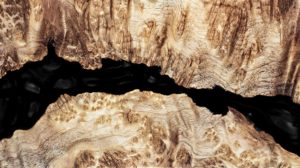
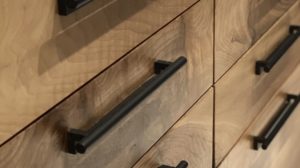

If someone wants to build a house out of cedar is it possible, and where can they find it?
Is it true that in Romania there is cedar and cedar oil where we can find it and be sure that it is real like the Lebanese and we are not sold something similar, thank you in advance good health!
Hello!
The cedar is not a tree specific to our country. It is grown for ornamental purposes, especially in the west and north-west of the country. That's why it's expensive and why Romanian builders don't use it for wooden houses.
Cedar lumber can be found at lumber dealers. Holver is one such distributor that also carries many exotic species, not specific to our country. They also sell cedar shingles.
As for the oil, you need to make sure of the reliability of the website or company selling this product. Unfortunately, we cannot help you with this information.
All the best!